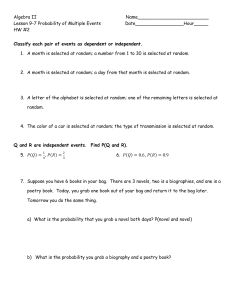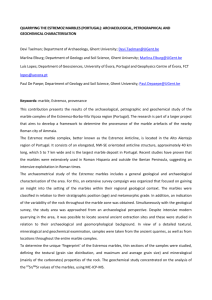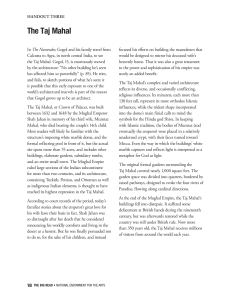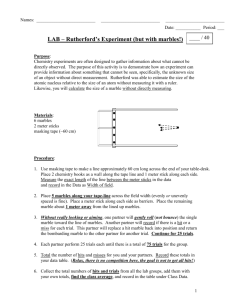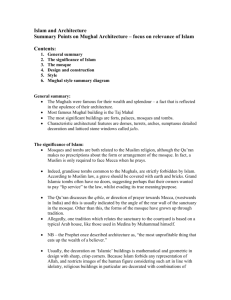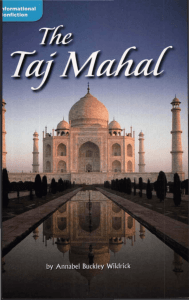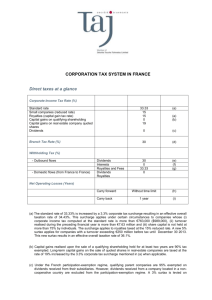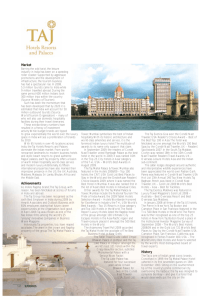Stones and Marbles of the Taj Mahal © 2002 Armchair Travel Co
advertisement
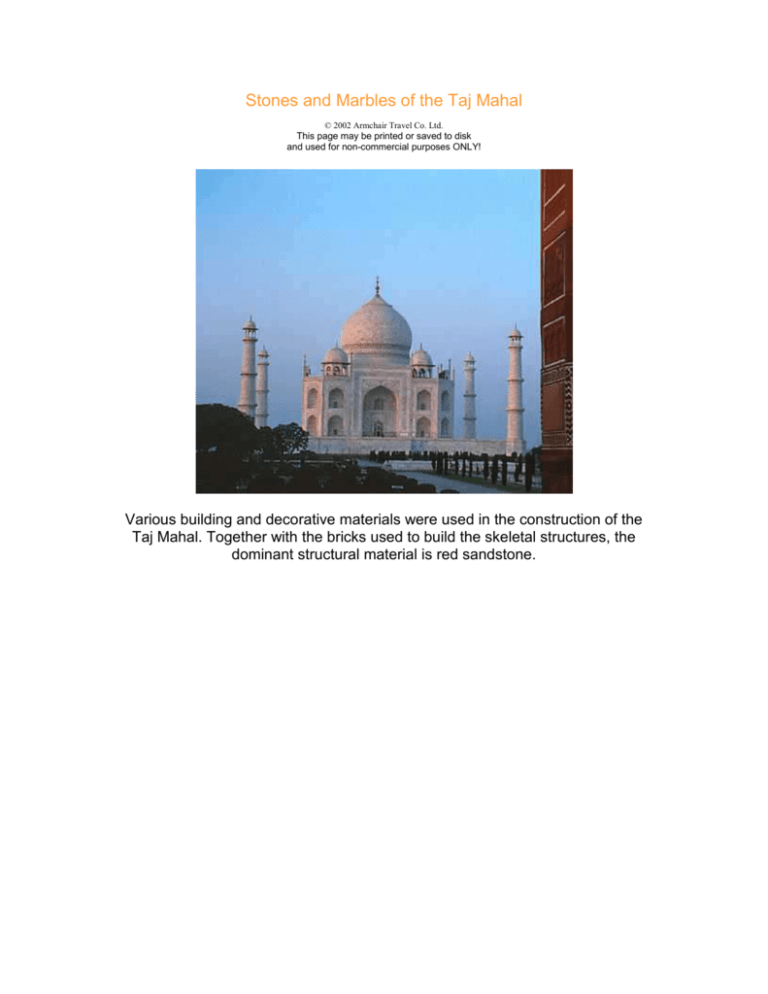
Stones and Marbles of the Taj Mahal © 2002 Armchair Travel Co. Ltd. This page may be printed or saved to disk and used for non-commercial purposes ONLY! Various building and decorative materials were used in the construction of the Taj Mahal. Together with the bricks used to build the skeletal structures, the dominant structural material is red sandstone. Chosen for its red hue, a color traditionally associated with imperial tents, the abundant local sources of sandstone made it an attractive option. It is the white crystalline marble facing of the main mausoleum for which the Taj is so famous. The glistening effect created by the translucent marble is well described by Kalim, a Mughal court poet, who wrote that the Taj "resembles dawn's bright face". Throughout the Islamic world, the color white symbolizes mourning, making marble particularly suited to use in the construction of tombs. Colored marbles and gemstones are used as decorative materials, together with painted stucco detailing inside some of the outer buildings. Marbles in muted tones were brought from Rajasthan. Yellow marble from Jaisalmer, dubbed 'the golden city', is famous even today for its bright color and attractive texture. Inlaid marbles and gemstones decorate the mausoleum itself. The more extravagant of these richly colored stones include orange carnelian, multi-colored agates and chalcedonies, blue lapis lazuli, bloodstone and garnet. Many of the stones used would have been taken from the vast Mughal treasury. Jean-Baptiste Tavernier, a French jeweller and visitor to the Indian court, wrote of Shah Jahan himself that "there was no-one more proficient in the knowledge of stones in the whole of the Mughal Empire". Marble was brought on carts from the Makrana quarry in Rajasthan under the supervision of Raja Jai Singh, a local nobleman. Additional supplies of stones were available from sources throughout the subcontinent, jasper from the Punjab, and chalcedony from Sri Lanka. Blue lapis lazuli was transported from even further a field, abundant sources found in mines in areas of the Hindu Kush.



